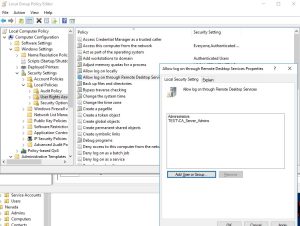Admin RDP Vs Shared RDP
Admin RDP
Admin RDP is more expensive than Shared RDP, ranging from three to four times. The difference is primarily due to the dedicated allocation of resources. These resources are not shared with other customers, servers, or websites. As such, Admin RDP customers have complete control over the operating and management of the software. Subscription plans reflect additional services and provisions to allot more resources. However, the price of Admin RDP depends on your requirements.
Shared RDP is not scalable as the server operating system is provided by the hosting company. Moreover, the customer cannot install programs or make changes to the system without the developer’s permission. admin rdp allows the customer to install or uninstall programs without worrying about the impact on other users. With Admin RDP, the customer has complete control over the server, and can customize it to suit his needs. In this way, he or she can provide better services and increase its efficiency.

In addition to these limitations, RDP has some significant security implications. While it allows users to access the same data and programs on different locations, it limits the delegation of credentials. If a user is authenticated on one device, they may not be able to connect to another device. The latter could be a network drive, and this could cause the remote user to be denied access to the network drive. Therefore, it’s essential to secure the access to these resources.
Admin RDP Vs Shared RDP
In addition to allowing administrators to access remote computers, Remote Desktop Administration can also be used to manage large numbers of servers. Larger organizations often use Remote Desktop Administration to centrally manage a large number of computers. Smaller organizations may only use RDP to manage one server. By connecting to another remote server, the user can access the server’s applications via a remote user interface. To configure remote desktop, the administrator must enable Remote Desktop Service.
Shared RDP is similar to a shared account, but it uses a common IP address. In contrast, Admin RDP hosting companies use dedicated servers with different IP addresses for each customer. The main RDP port is TCP port 3389, while shared RDP does not support any other major port. This means that shared RDP may be unusable by some users. There are advantages and disadvantages to using both types of RDP.
If you are unfamiliar with the differences between shared and admin RDP, it is best to consult a computer expert. In addition, you should consider the type of operating system you are using. If your computer has a Windows operating system, you can still use programs that require it. Otherwise, you would have to give up using those programs and go for a different operating system. If you’re running a non-Windows OS, admin RDP can be a great option.
Admin RDP is available on both Windows and Mac operating systems. It allows you to connect to a remote computer with ease. The RDP protocol is a standard and free protocol used by many organizations. It enables you to control a computer remotely from a remote location. In this way, you can manage hundreds of computers without the hassle of installing a separate software application on each machine. It is best to use a server with network management capabilities.
Leave a Reply